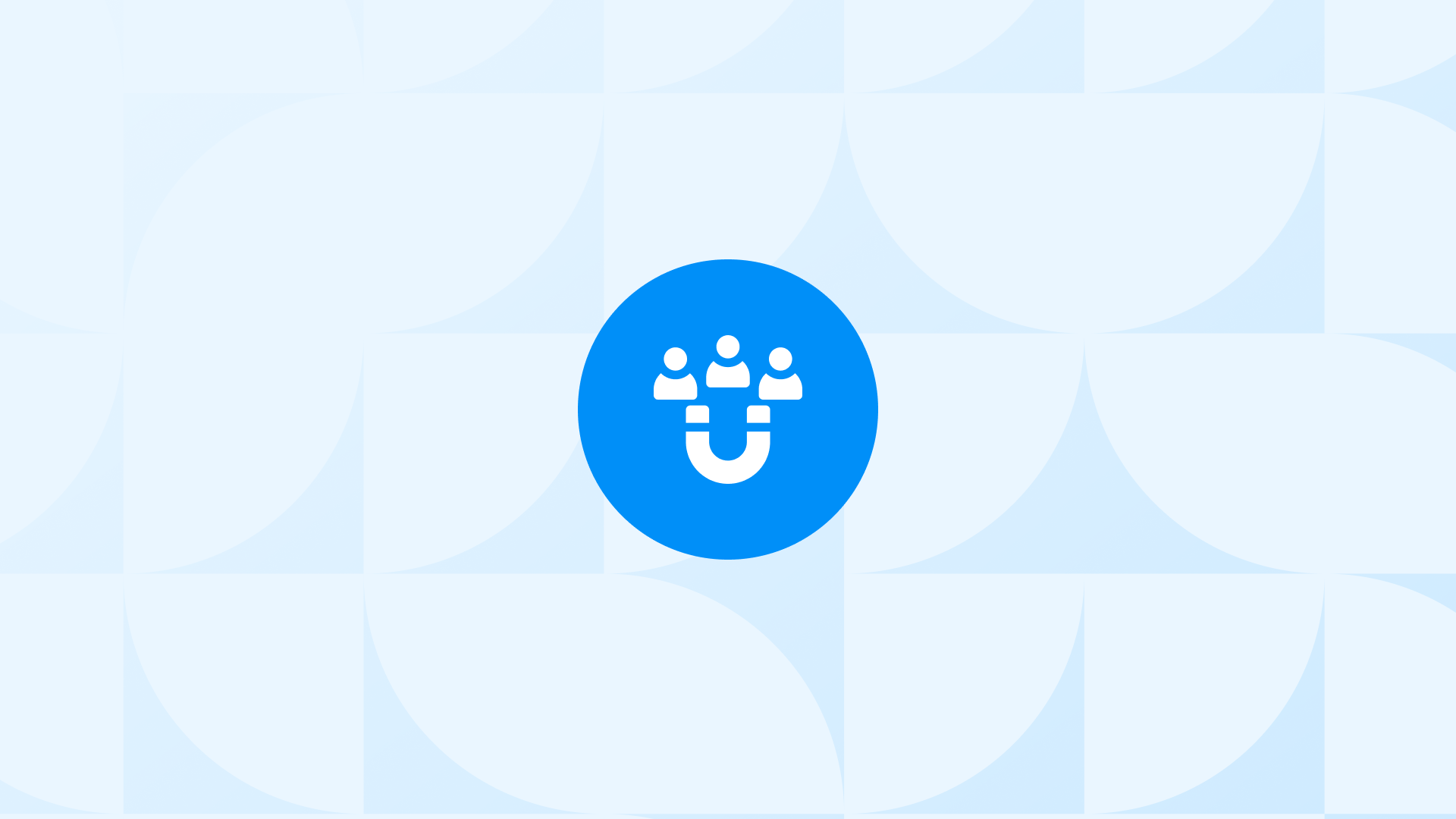Understanding the customer journey on your website is key to effective customer acquisition. Every step, from when people first discover your brand to when they make a purchase and even afterward, plays a crucial role in attracting them, maintaining their interest, and ensuring their loyalty.
In this guide, we’ll examine specific strategies to enhance each part of the customer journey, focusing on optimizing your website for customer acquisition.
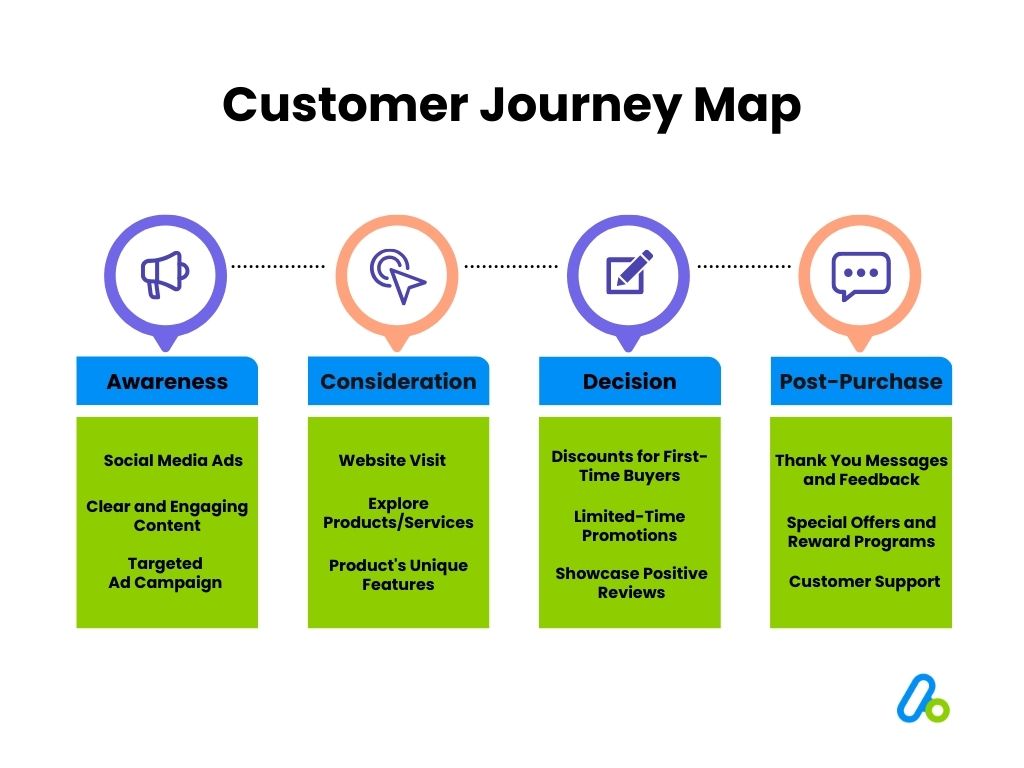
Customer journey steps in customer acquisitionKnowing how customers decide to buy things on your website is important. This understanding helps you make your website better for each step of their journey, which can lead to more sales. We will give you strategies for each step of the customer journey. Here is a brief overview of each step:
Getting to Know You (Awareness Stage): This is when people first hear about what you sell. Your website should have clear info about your products or services. Things like blog posts, FAQs, and introduction videos are really helpful. You want to answer the questions your customers might have.
Thinking It Over (Consideration Stage): Now, visitors are looking at what you offer and comparing it to others. It’s key to show why your offer is the best. Have good descriptions, guides to compare products, and reviews from other customers. Your website should make it easy to see the benefits and compare different options.
Ready to Buy (Decision Stage): Here, someone is about to buy something. Make this step super easy. Have a clear button or link to buy (CTA) and a simple checkout process. Don’t make them go through too many steps or give too much info that might make them change their mind.
After the Purchase (Post-Purchase and Loyalty): Once someone buys something, you want to keep them coming back. Send them a thank you message, help them if they have problems, ask what they think, and give them special deals or rewards. Keep adding new stuff or info to your website to bring them back.
By making your website fit each part of the customer’s buying process, you make it easier and more enjoyable for them to buy from you.
This not only helps get new customers but also keeps them coming back, which is great for your business in the long run.
At the end by following this process you can increase your average order value too!
The Awareness Stage
This stage is all about grabbing attention and sparking interest. It’s where people first come across your brand and start to learn about what you offer.
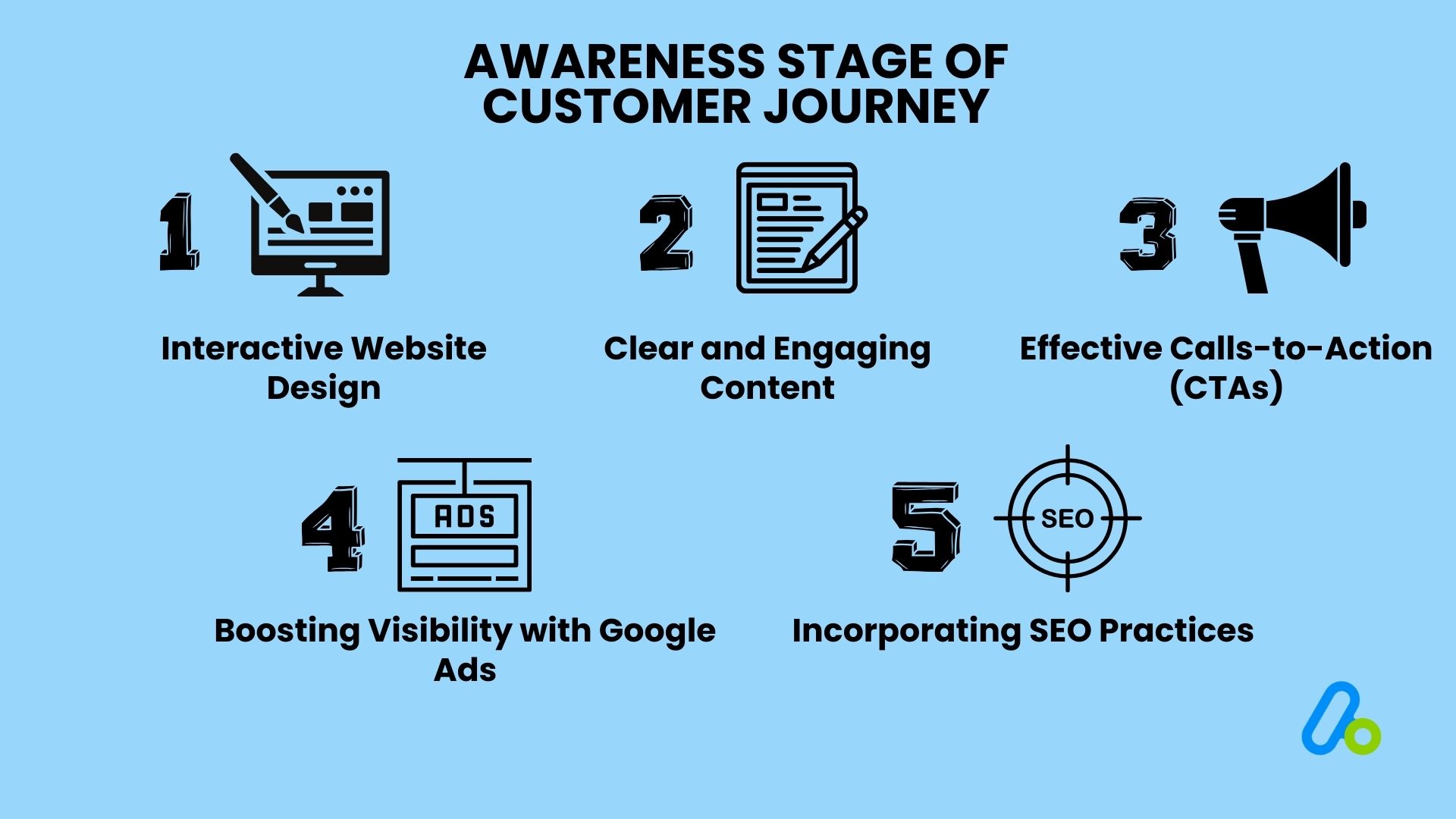 1. Interactive Website Design
1. Interactive Website Design
Add an interactive product carousel to your homepage. Include features like an image gallery or interactive demos that show off what your products can do. Make sure your website layout works well on mobile devices too.
Why It Matters: Having a well-designed website and product pages makes the visitors interested and helps them see the variety and benefits of your products easily
🎉 Bonus Content: Take a look at the best Shopify page builder apps to create pages that can convert.
2) Clear and Engaging Content
Put an explainer video on your homepage that makes a complex part of your product easy to understand. Use formats like videos or infographics to simplify complicated ideas.
Why It Matters: This helps visitors quickly grasp what your product is about and how it solves their problems.
3) Effective Calls-to-Action (CTAs)
Try different CTAs, like changing ‘Learn More’ to ‘Get a Free Trial’, and see if more people sign up. Make sure your CTAs are clear and tell visitors exactly what they’ll get by clicking.
Why It Matters: The right CTA can significantly increase the chances of visitors taking the action you want, like signing up or buying something.
4) Boosting Visibility with Google Ads Set up Google Ads to appear in search results. Focus these ads on what makes your product unique and link them to a page that encourages people to take action, like making a purchase or signing up.
Why It Works: Google Ads can increase your online presence and direct potential customers to a page that’s designed to convert their interest into action.
5) Incorporating SEO Practices
Make your main product page more search-engine friendly by using keywords that people are likely to search for. Do thorough research to find these keywords and add them naturally to your web content and meta tags.
Why It Matters: Good SEO practices can help your website rank higher in search engine results, making it more likely for potential customers to find you.
You can read our post to learn how to track organic search traffic in GA4!
Consideration Stage
Here, we’re about showing why we’re the best choice. Customers are looking at what you offer and weighing it against others, so it’s important to make your products or services stand out.
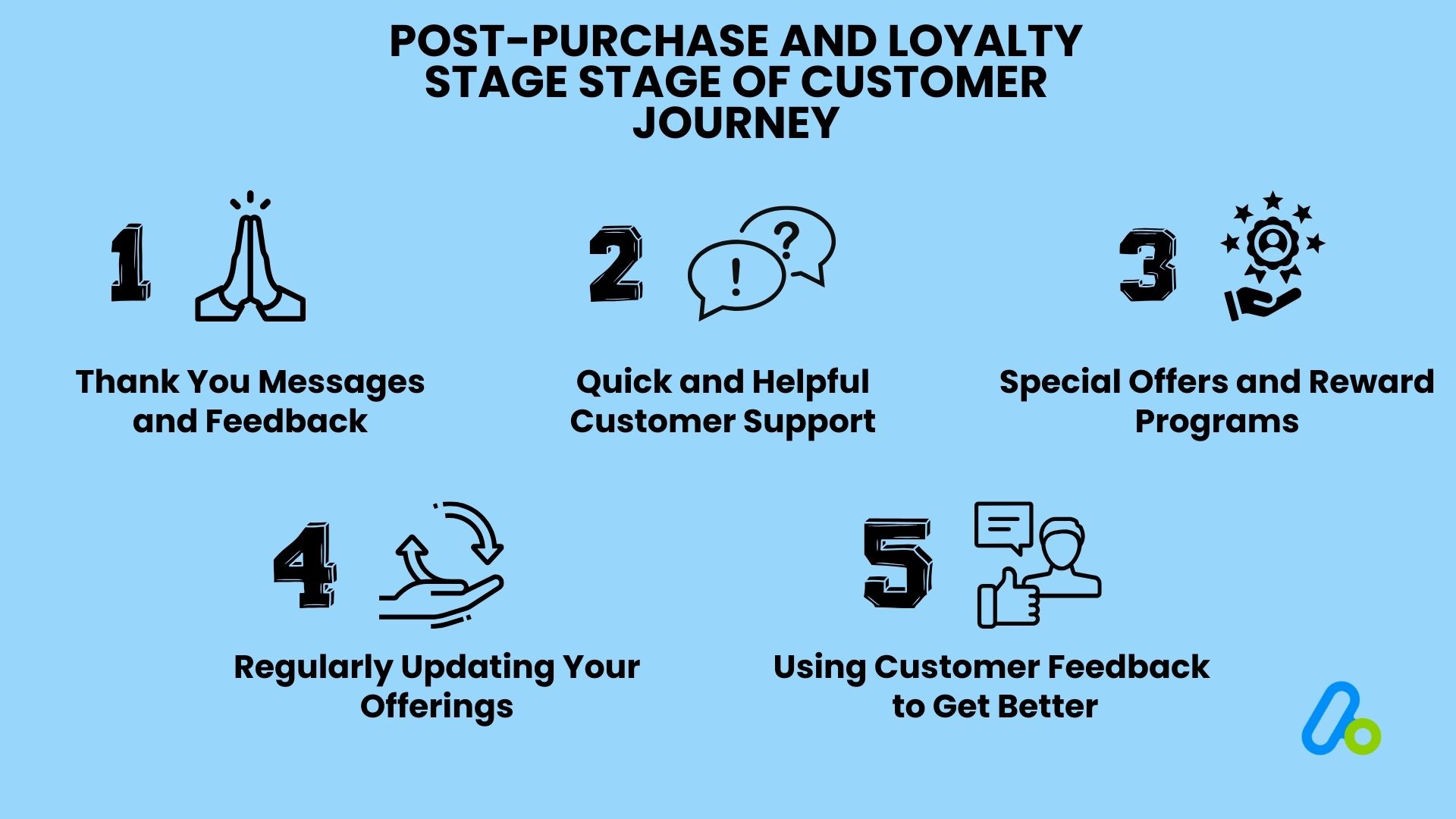 1) Showcasing Your Product’s Unique Features
1) Showcasing Your Product’s Unique Features
On your website, have a section just for showing off what makes your products special. Use engaging demos, clear descriptions, and good photos or videos. For example, use short videos to show how your products work, and add stories from customers and examples of how your product is used.
Why It’s Effective: This helps visitors see exactly why your product is great and how it could work for them.
2) Comparing Your Product with Others
Make comparison guides or charts that are easy to find on your site. These should show why your product is better than competitors in key ways, like being higher quality, more affordable, or more sustainable.
Why It’s Effective: A clear comparison can help visitors quickly understand why your product is the better choice.
3) Using Customer Reviews to Build Trust
Put together a selection of customer reviews that really show why people love your product and put these on your product pages. Why It’s Effective: Good reviews from other customers can convince new visitors to trust your product and brand.
4) Creating Helpful Content
Write blog posts or articles that answer common questions or address concerns people might have about your products or industry. This content should be informative and position your brand as an expert in your field.
Why It’s Effective: Informative content can help solve customer problems and show how your product is a good solution, establishing your brand as a go-to in your industry.
The Decision Stage
This stage is all about getting customers to say ‘yes’ to your products. It’s the point where they decide to buy, helped by strong calls-to-action and attractive deals.
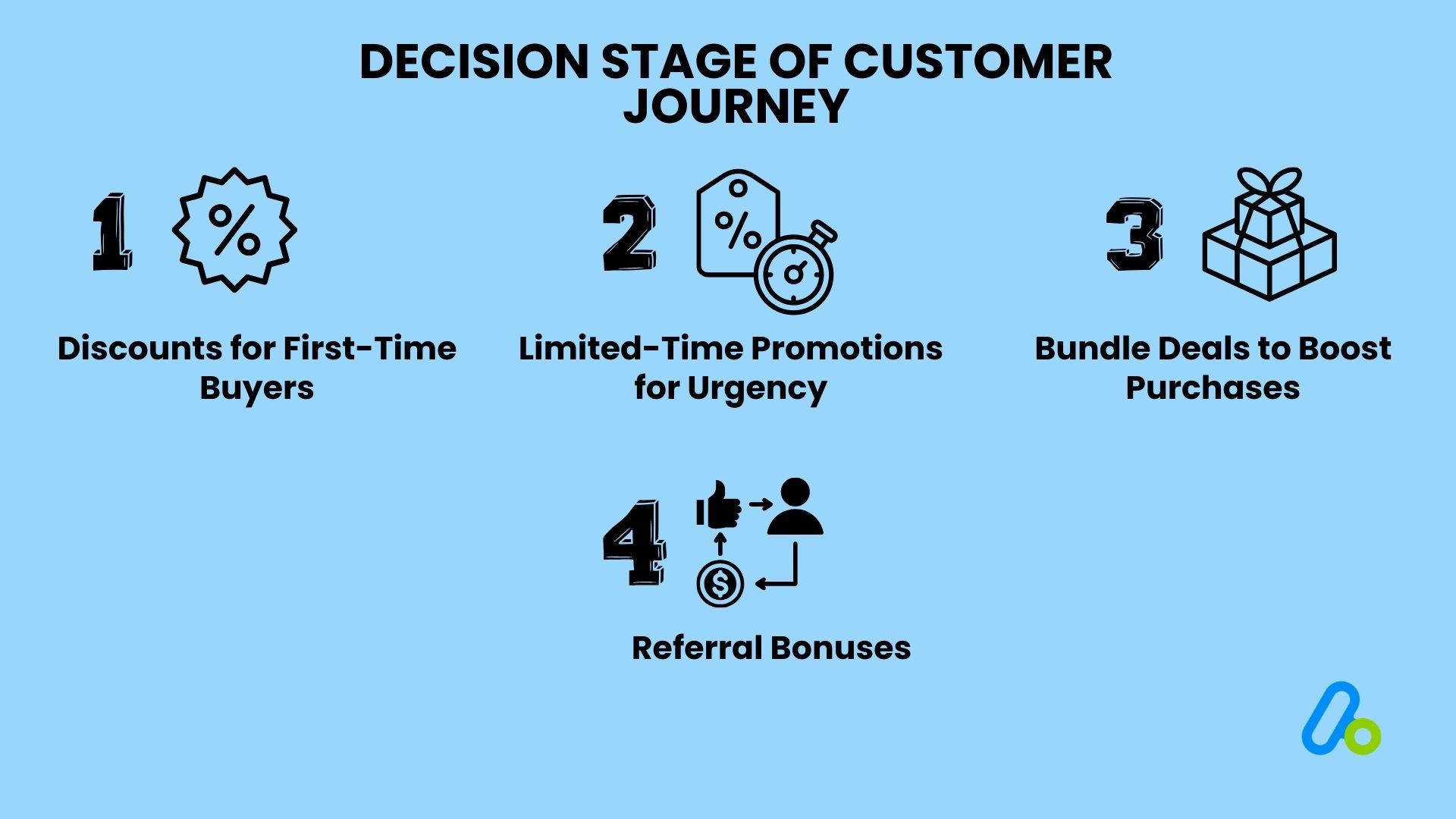 1) Discounts for First-Time Buyers:
1) Discounts for First-Time Buyers:
Offer a special discount for first-time buyers, such as 10% off their first purchase. Promote this on your website and in emails to motivate new visitors to buy. Pair this offer with reasons why your products are great to make the deal even more appealing.
Why It Works: Special offers can make new customers more likely to try your products for the first time.
2) Limited-Time Promotions for Urgency:
Have short-term sales, like flash sales or holiday discounts. Use phrases that convey urgency and countdown timers in your ads to make people feel like they need to buy soon.
Why It Works: Creating a sense of urgency can lead to a quick increase in sales as customers rush to grab the deals.
3) Bundle Deals to Boost Purchases:
Sell groups of products or services together at a reduced price. For instance, put together a set of items that go well together and sell them as a package deal. Make sure the cost savings are clear to customers.
Why It Works: Bundles encourage customers to buy more by showing them the value and savings they get from purchasing a package.
4) Referral Bonuses for Customer Recommendations
Have a system where existing customers get rewards for bringing in new customers. Give them tools like personalized referral links to make sharing easy. Why It Works: Referral programs can grow your customer base organically through recommendations from current customers.
🎉 Bonus Content: You can explore the top Shopify checkout customization apps to personalize your checkout experience with these strategies without coding.
The Post-Purchase and Loyalty Stage
Now it’s time to keep customers happy and come back for more. This phase is about staying in touch after they buy, making sure they’re happy, and turning them into loyal fans.
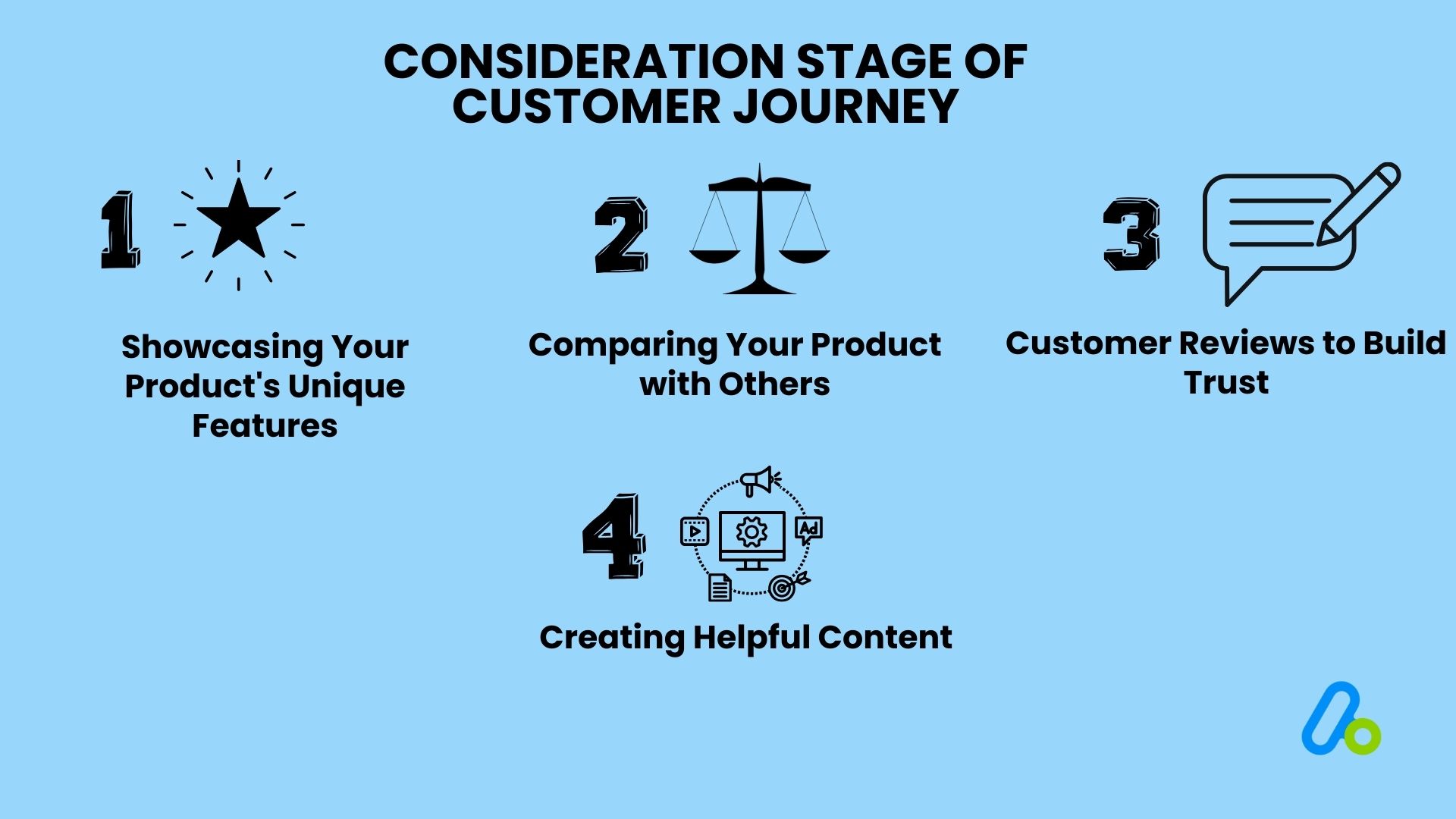 1) Thank You Messages and Feedback
1) Thank You Messages and Feedback
Send a personal thank you email after each purchase. Later, ask for their thoughts or a review of the product.
Why It’s Good: This makes customers feel appreciated and gives you useful feedback for making your products or services even better.
2) Quick and Helpful Customer Support
Have a fast-responding customer support system, like a live chat on your website or a dedicated email for help. Make sure to address any customer issues or questions quickly.
Why It’s Good: Quick help shows customers that you’re there for them even after they’ve bought something, building trust.
3) Special Offers and Reward Programs
Create a program where customers get points for buying things, which they can then trade in for discounts or gifts.
Why It’s Good: This makes customers more likely to come back and buy again because they get rewards for doing so.
4) Regularly Updating Your Offerings
Keep adding new things to your website, like content or products, and let customers know about these updates through emails or social media.
Why It’s Good: Keeping things fresh and new encourages customers to come back and see what’s new.
5) Using Customer Feedback to Get Better Ask your customers what they think, maybe through surveys, and use their suggestions to improve what you offer.
Why It’s Good: Listening to your customers and making changes based on what they say shows you care about their needs and want to keep getting better.
At the end of all this process, Google Analytics 4 can be a very good option to analyze the results of the experiments and work you have done. If you don’t have enough information about GA4, you can take a look at the best GA4 courses in 2024!
Final Words
It’s clear that understanding the customer journey on your website is key to successful customer acquisition and retention. Every step, from the first time potential customers find you to how you engage them after their purchase, is a chance to make a lasting impression.
By applying the strategies we’ve discussed, you can transform your website into an effective tool for attracting new customers and fostering their continued loyalty.
Remember, making a sale isn’t the endpoint; it’s about building enduring connections and loyalty. This ongoing effort is essential for the growth and success of your business in the realm of customer acquisition.































